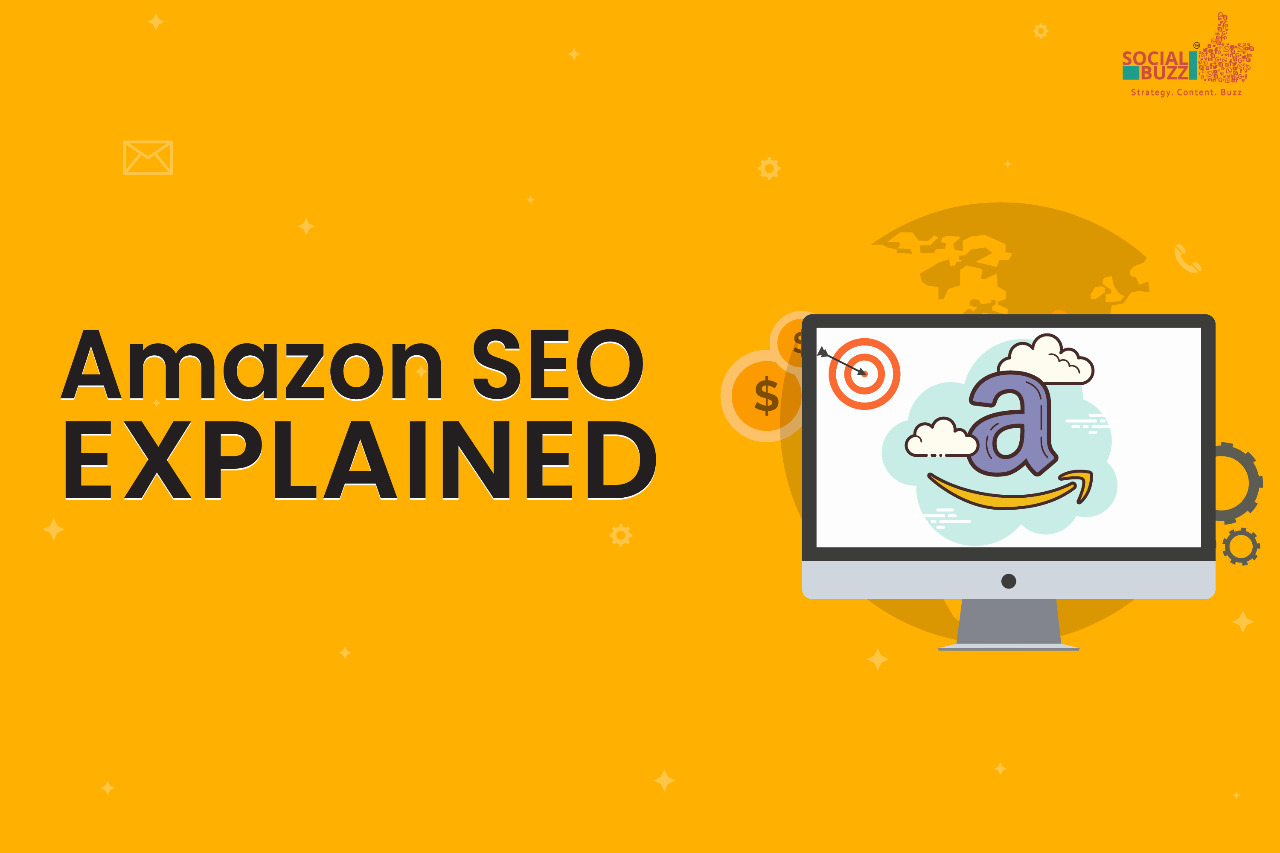Amazon SEO Explained!

What is Amazon SEO?
Amazon SEO means representing your product listings to appear at the top of the Amazon search results (for all relevant keywords).
Amazon SEO = Optimising Product List = Higher Rankings = More Reach = Rise in Sales
Similar to Google, buyers on Amazon enter a keyword to find what they are looking for, users mainly click on the first few results and rarely click on a product on the second, third or any further page. If you’re selling on Amazon, this means that the rankings on Amazon are important success factors for your business. The higher you rank, the more you sell!
If you rank on page 3 or lower, selling your product on Amazon is going to be a big task for you. More than 70% of shoppers now commence their search for new products on Amazon. For this, we can infer that if your products are not ranking well, you’re missing out on sales potential!
The ranking of a product is defined by an algorithm called “A9”. This algorithm decides the fortune of our business on Amazon. Let us understand it to get the most out of it.

How Does the Amazon Ranking Algorithm Work?
With a plethora of products to choose from, users perform more than hundred millions of search queries on Amazon each month. For each unique search request, Amazon picks — within a few milliseconds — which one of the hundreds of millions of products it will show on standing position number 1, number 2, etc. Let us understand the factors that Amazon take into account to solve this very complex challenge.
Amazon Ranks Products Based on Purchase Likelihood
Three parties come mutually on Amazon: A buyer, a seller, & Amazon. Shoppers come to Amazon with the only purpose to purchase. Their searcher intent exhibits an essential contrast to the mechanics of Google.
When a user types “Washing Machine” on Google, it’s unclear what this user is looking for. The user might want to buy a Washing Machine, but he might also just be looking for an image of a Washing Machine to use in a PowerPoint presentation.
On Amazon, there is only a sole purpose for every search query: buying the product. Whereas sellers have the only sole purpose on Amazon: they want to sell! Amazon wants to create revenue, but Amazon will simply make money only if a sale takes place (Amazon receives a 15% commission from a seller or collects the margin from a vendor).
All three parties (Amazon, buyers, and sellers ) share a common goal: they all want a transaction to take place! Amazon’s goal, therefore, is to build an algorithm that increases the number of transactions. To achieve this, Amazon places the product that shoppers are most likely to buy on rank #1, the second most likely on rank #2, and so on — for every single search query.
As a consequence, Amazon has to determine the purchase likelihood not just for every product, but for every combination of product and search query. To tackle this challenge and rank products, Amazon follows a two-step process.
Step 1: Keywords Ascertain If Your Product Ranks on Amazon
In the first step, Amazon separates all products that are not suitable for the customer search inquiry — by looking at the keywords. If a product does not include all keywords of the search query, it cannot show up in the search results. This step is crucial because it reduces the number of products that Amazon needs to sort by purchase likelihood.
Step 2: Performance Determines How Top Your Product Ranks on Amazon
In the next step, Amazon determines the shopping likelihood for the remaining products and ranks them in a specific order. To do this, Amazon looks at the performance of the products. Performance is ranked by CTR (click-through-rate in search result), CR (conversion rate on the product page), and especially the sales. These are some of the significant KPIs for Amazon as they outline the steps that users need to take to buy a product.
Amazon looks at these KPIs on a keyword-specific level: a Headphones, for example, will have different CTRs, CRs, and sales for the keywords “Headphones” and “Earphones”.
From this, we can infer that better your CTR, CR, and sales are for a specific keyword, the better your product will rank for this keyword.
To improve your CTR, CR, and sales and improve your rankings you can use a variety of levers, such as product images, copy, review management, and Amazon PPC.
Conclusion
Once people find your product and think of it as appropriate, they’ll probably click and buy it. The more people click and buy your product, the better the A9 algorithm will rank it. The higher your product ranks, the more people will buy it.
This momentum will, in turn, grow your rankings and even allow you to put more resources into marketing actions to drive your sales.
This process and strategy can form a self-perpetuating flywheel between rankings, sales, and marketing initiatives that improves your sales.
About the Author: Jayant Kawatra
With extensive experience in the commercial utilisation of multiple social media channels including Facebook, Instagram and YouTube, Jayant builds successful social strategies that increase brand awareness, promote customers engagement and ultimately drive web traffic and conversions. With an undergraduate degree in business administration and strong business acumen, he brings a customer-focused approach to online and social marketing.





Woah, now I understand how it works and I think it’s pretty amazing how they do this.
I didn’t realize that there was a whole world to Amazon SEO! This is good for me to know when I start selling my products on Amazon in the near future.
These are interesting bits of information. I never really paid Amazon SEO any attention, but it’s certainly something that maybe I should pay attention too.
really an informative blog post…this would be very helpful and useful for every of person who is thinking of selling products on amazon..well this is really nice..
This was an interesting read. I do buy a lot of things on Amazon but I never really thought about how their algorythm works. Or that sellers need to do SEO in order to rank on the first page. I know that some sellers do go over the top and mislead the buyer and it happened to me as well – I bought a yoga mat but I received a knee pad, just because the seller mislead through keywords.
This was an interesting post about a topic I’ve not really thought about before. I’ve not sold anything on Amazon but can imagine keywords being important.
Thanks for being clear and concise with the info you’ve provided! I tried reading this on another site and it was too long! Thanks for this, it gives me a better understanding of Amazon SEO.
I have been working with Amazon for some time and working with their SEO. I have more to learn though! There is always so much to learn and so little time.
This has been a clear explanation and a nice read as well! I don’t know much on this field so thanks for sharing this interesting article with us!
I hears a lot of things in amazon. We dont have amazon here in Philippines but i will share this to my relatives in California. Thank you for sharing this interesting post.
SEO might be confusing for beginners, but once you learn about anything that’s when you get better!
I wish that Amazon had an affiliate program with us here in the PH so I can maximize this.
I need to use Amazon affiliate program more often. Amazon is my life.
Thanks for sharing this post. This was really helpful. I have learned new things from this blog. Keep posting.